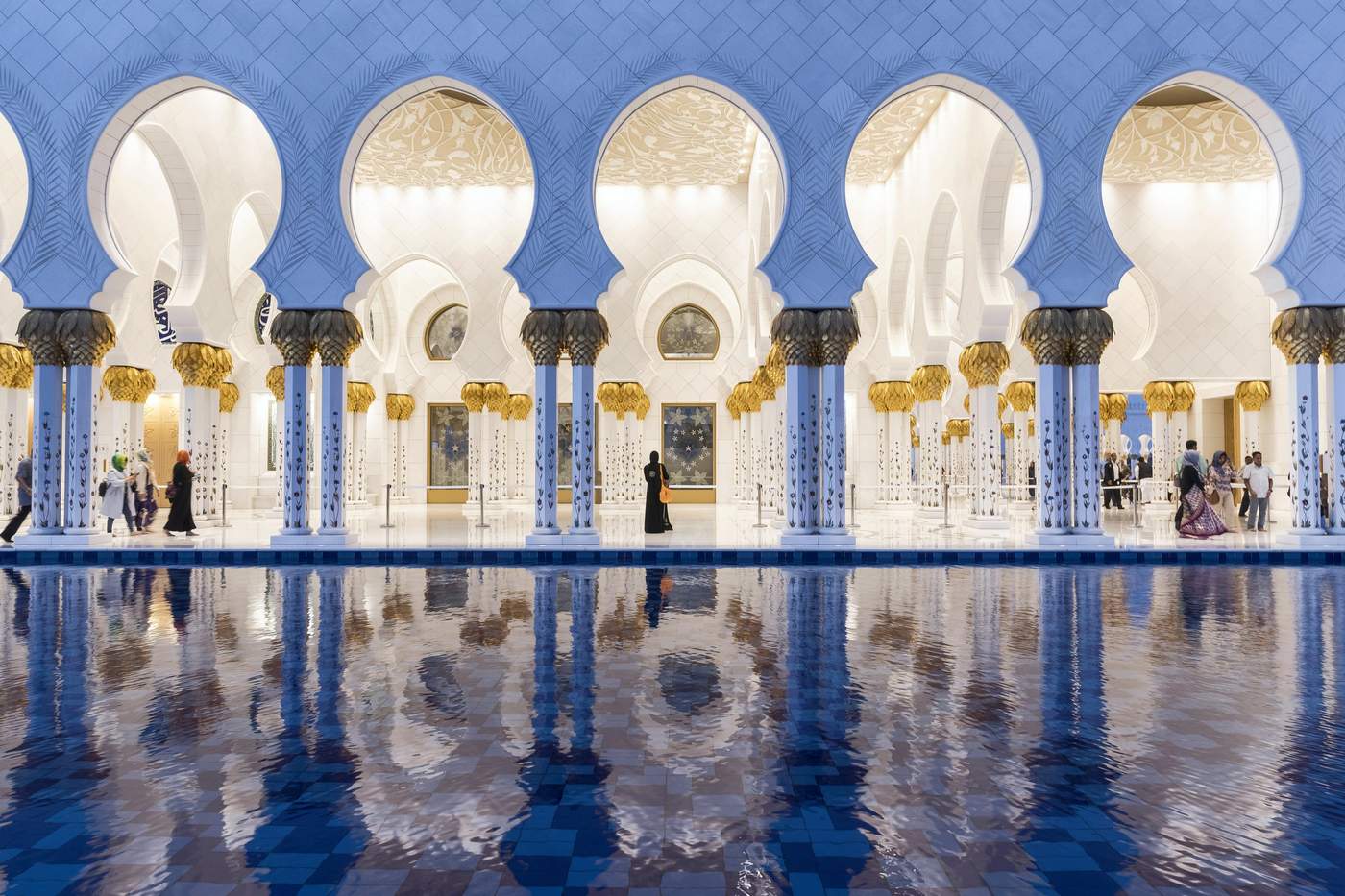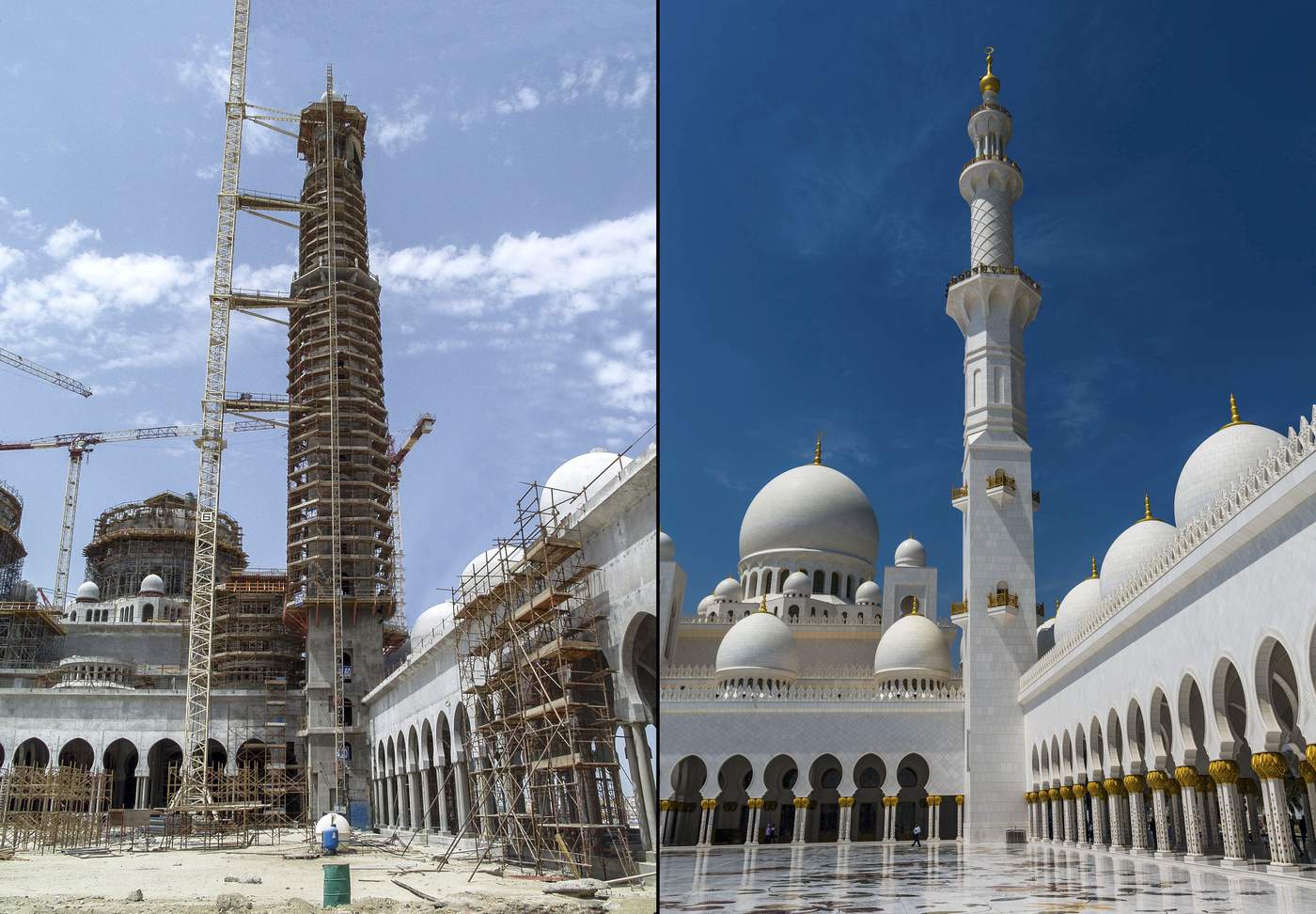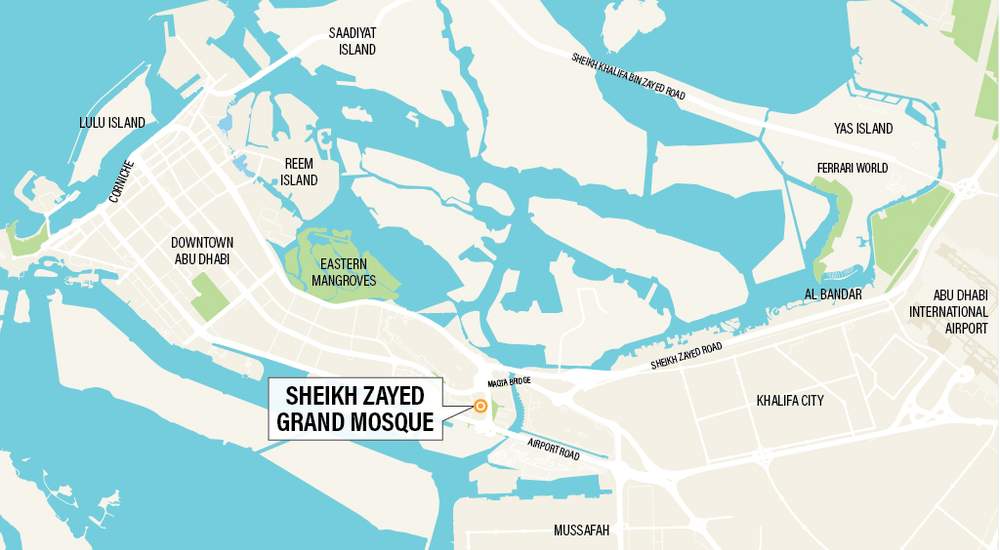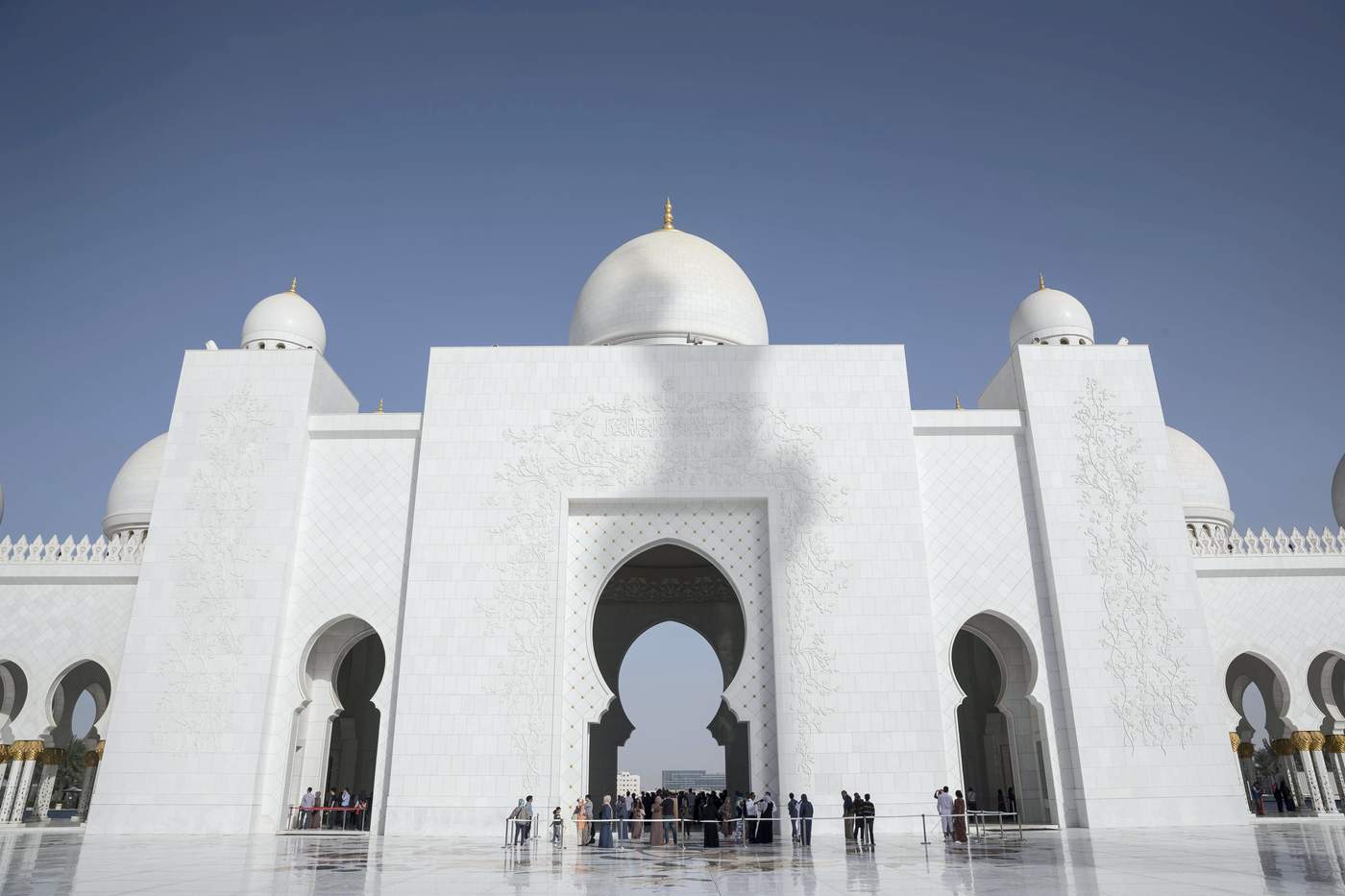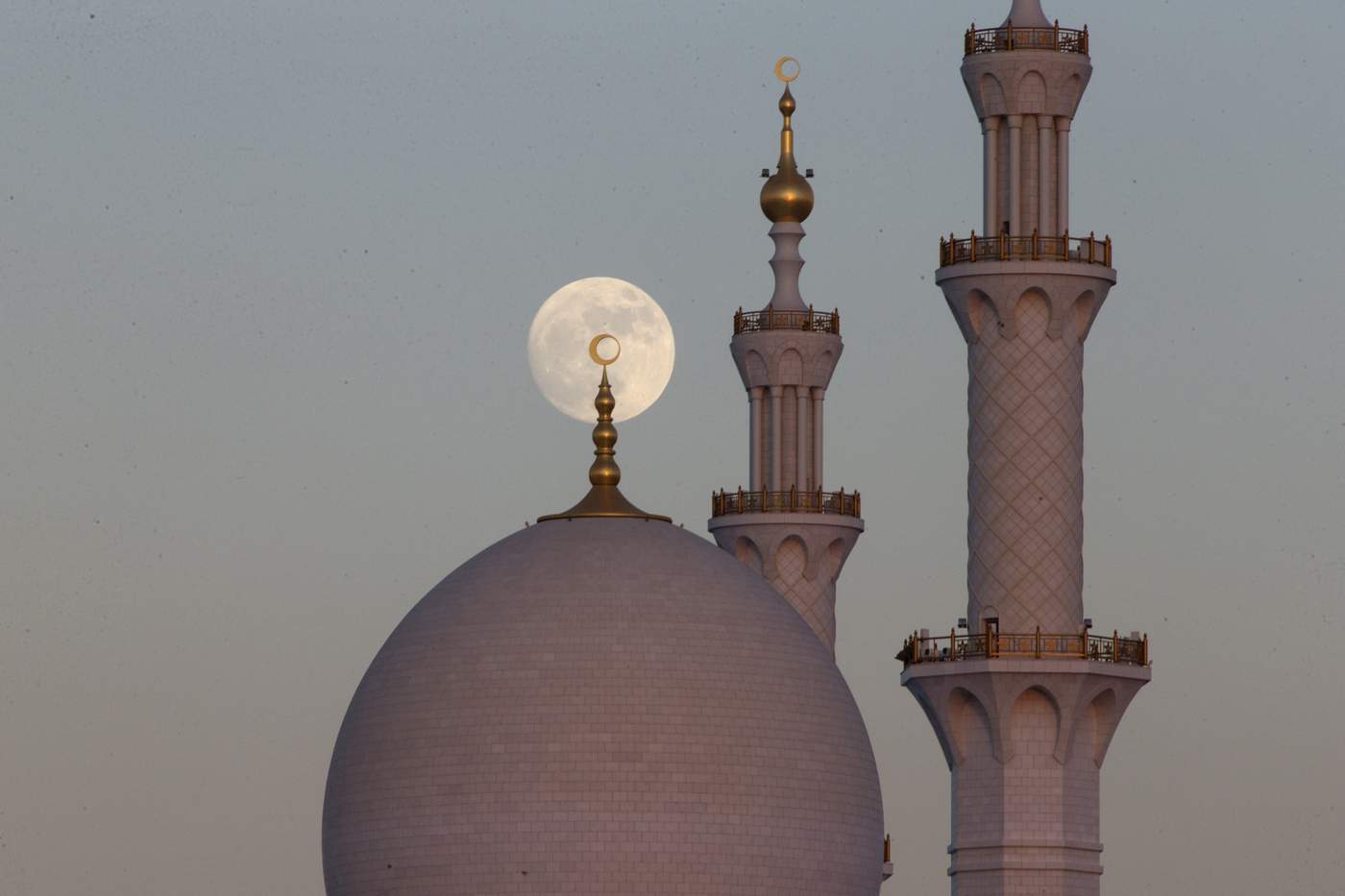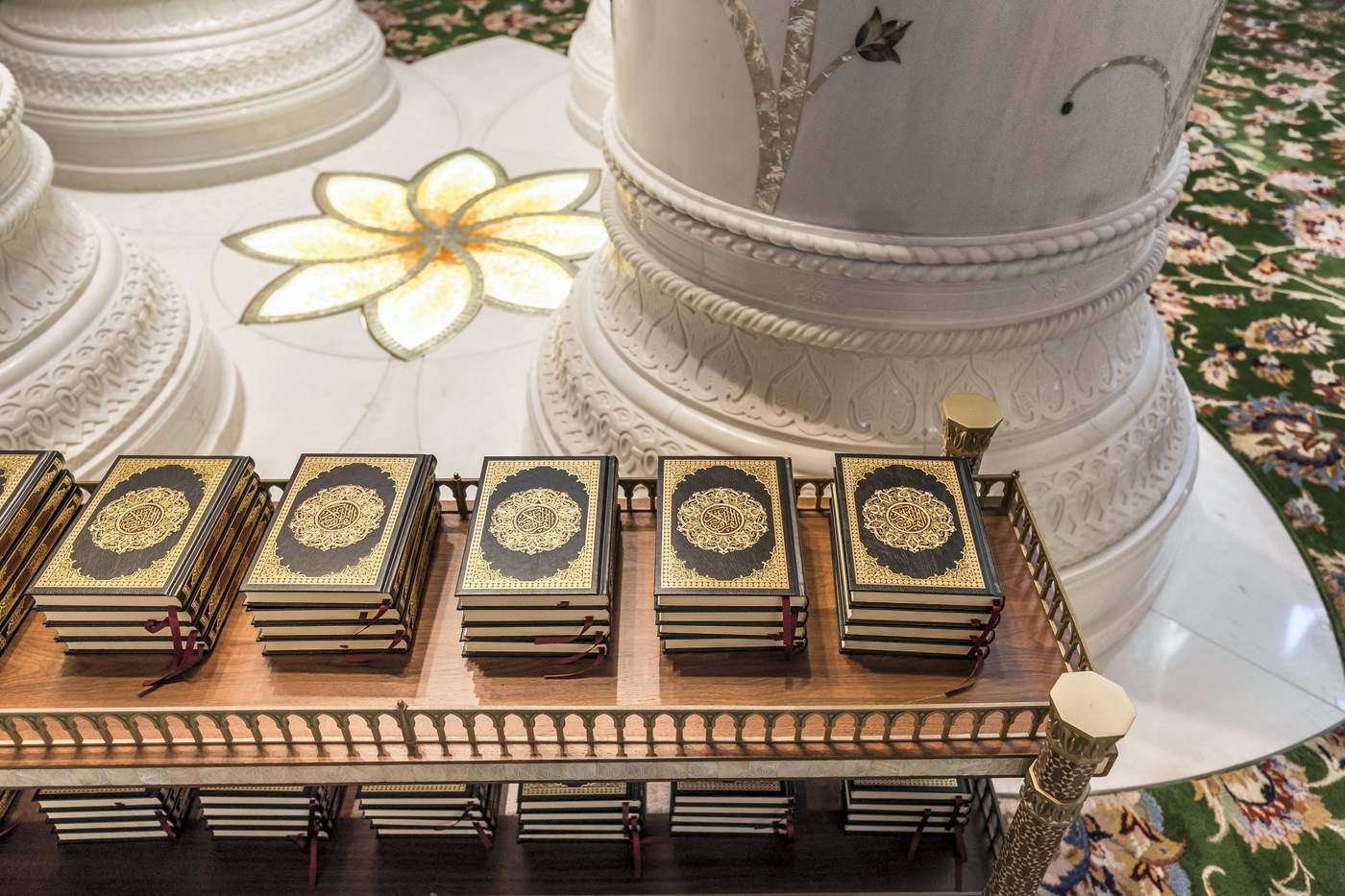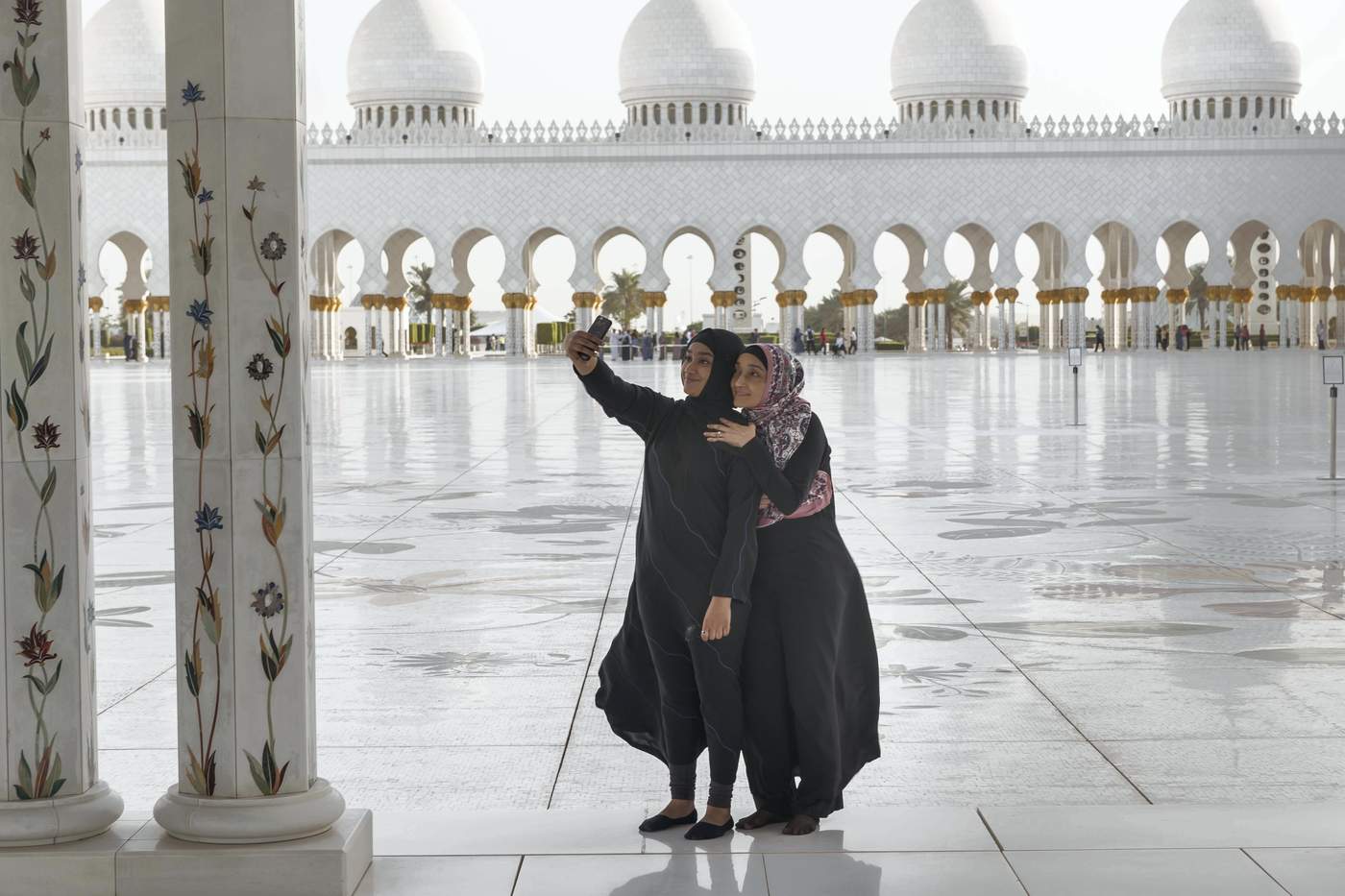December 20, 2007. The newest mosque in Abu Dhabi opens to the public following Eid Al Adha prayers led by The President, Sheikh Khalifa.
It was a symbolic moment. Three years earlier, his father, the late President Sheikh Zayed, had been buried there. It was Sheikh Zayed's vision to build the mosque - one that would act as a beacon for Abu Dhabi and the United Arab Emirates. One that would showcase the tolerance of Islam and send a message of peace regardless of religion, culture or identity.
Not only is Sheikh Zayed Grand Mosque a place of worship and the burial place of Sheikh Zayed - it has also become a landmark. No one ever forgets the first time they saw the mosque. For me, it was when I arrived in the city for the first time in 2012, from a taxi on Sheikh Zayed Bridge: it was bathed in blue light and stood apart from everything else.
Sheikh Zayed Grand Mosque is now also a place visited by people hungry to learn more about the UAE. And they are arriving in their millions. Ten years on from the opening date, more than two million people annually visit the mosque to see how the vision of Sheikh Zayed has been realised.
“Sheikh Zayed Grand Mosque is built in three styles: Mughal, Moorish and Ottoman,” says Mr Almushairi.
Ottoman architecture is known for its domes, ceramics and sense of weightlessness; Mughal for its uniformed appearance; and Moorish for its arches and gardens.
“Many mosques are built in one style. This is what makes it unique.”
The mosque has 82 domes. The insides of the domes are inscribed with verses from the Quran. There are 1,192 columns - 1,096 columns around the arcade and 96 columns for the three main domes. Designed in the shape of palm trees with golden fronds, they are clad in marble and inlaid with floral designs and semi-precious stones using an Italian technique from the 16th century known as pietra dura.
“The arcade is very inspirational,” says Mr Almushairi. “We have a strong relationship to the palm tree, which is the source of food and shelter. It gives us inspirational stories to tell and keeps the visitors thinking and imagining. And the Moorish garden too. That’s why I believe it’s the pathway to heaven.”
Ishaq Mohammed Almushairi, senior specialist of cultural guidance, walks us through the arcade of Sheikh Zayed Grand Mosque.
Video by Willy Lowry / The National
Four 106-metre minarets rise above the 17,400 square metre sahan, or courtyard, which features beautiful floral designs completed by British artist Kevin Dean. He was recommended by a colleague in the Royal College of Art and met Sheikh Sultan bin Zayed, then Deputy Prime Minister, who was in charge of the project.
“Sheikh Sultan had done sketches on the back of an envelope of lots of flowers and I could recognise that. It was just a matter of putting together the right flowers for the site,” says Mr Dean.
“He was quite interested in moving away from traditional geometrics and doing something different. And I think he was interested in surprising people in a way.”
Dean chose flowers that would be recognisable for people all over the world but also would grow in the Arabian Peninsula, such as iris, tulip, jasmine, roses and passiflora.
Kevin Dean talks about the project in 2015
The designs were first done the old-school way, on paper, and then transferred to computer. Dean was able to select from about 37 different colours of natural marble from countries such as Pakistan, Afghanistan, India and Italy. The marble was then cut by water jet into small and large coloured pieces – pieces of a jigsaw that were put together back at the mosque site in Abu Dhabi. Italian marble fabricators Fantini Mosaici built these courtyard designs.
Other designs by Mr Dean can be found around the north and south entrances and the prayer hall.
“Any design has its flaws and you can see how you might have done things differently. But in the main I’m really proud of it. I get emails every week or so from someone who has been there and admired it. Lovely, kind words,” he says.
Rectangular reflecting pools around the mosque cool the air and give the atmosphere of an oasis. Inside the main prayer hall is the world’s largest hand-knotted carpet. Designed by master carpet maker Ali Khaliqi of Iran, it spans 5,700 square metres, was made by about 1,200 artisans, and is made of 70 per cent wool and 30 per cent cotton.
There are seven crystal chandeliers with flower designs in the mosque, and they were made by Faustig of Munich. The company was also behind the chandeliers in Sultan Qaboos Grand Mosque in Oman, Al Shohada Mosque in Sanaa, and several projects in Saudi Arabia.
Dr Thomas Faustig, owner and chief executive, recalls being involved with the project in the early 1990s. “At this time the interior decoration was a different one, a traditional one. About 10 years later, the project changed,” he says.
Between five and 10 companies were asked to put forward their ideas again, and Dr Faustig’s design won.
The largest chandelier hangs in the main prayer hall. It is made of stainless steel, gilded brass and glass panels that are studded with crystals.
About 16,000 LEDs lights and 10,650,000 crystals were used in the principal chandelier.
“To make such a chandelier is not easy because everything is bent. We all like to think in square dimensions, but this was quite complicated because it was a three-dimensional design.”
“It’s made for eternity. All we have to do from time to time is exchange the LEDs, or electronic components, but the chandeliers should last for the next 500 years,” says Dr Faustig.
At the time, the principal chandelier was the world's largest.
“They are fantastic, extremely stunning and unique. We have never again done such a type of chandelier. The crystals were specifically made for this chandelier – it was special, special, special. And it was a new world record. I’m extremely happy with the outcome, and it is extremely beautiful.”
Credits
Words: John Dennehy
Graphics: Ramon Penas
Photography: Antonie Robertson
Videos: Willy Lowry
Editors: Mo Gannon, Nic Ridley, Phil Trotter
Photo Editor: Robert Gurdebeke
Copyright The National, Abu Dhabi, 2017

